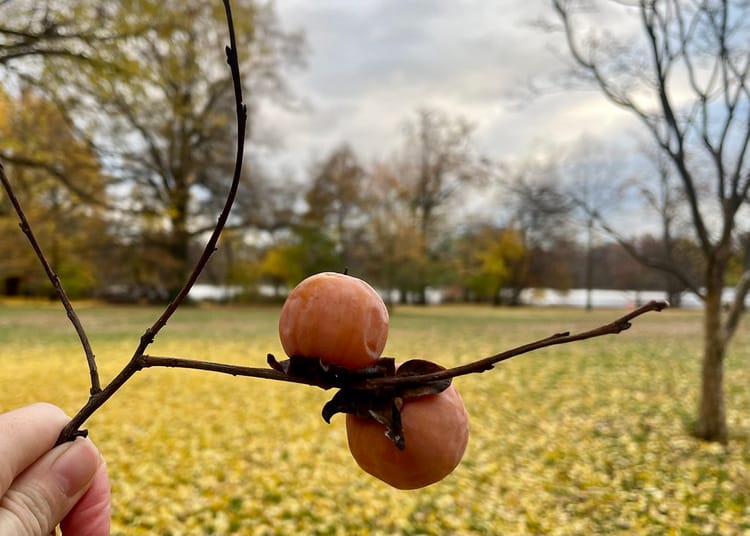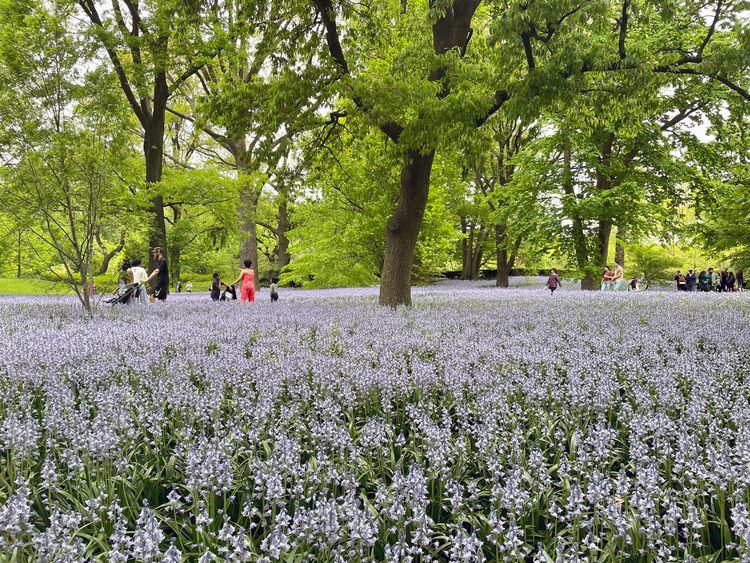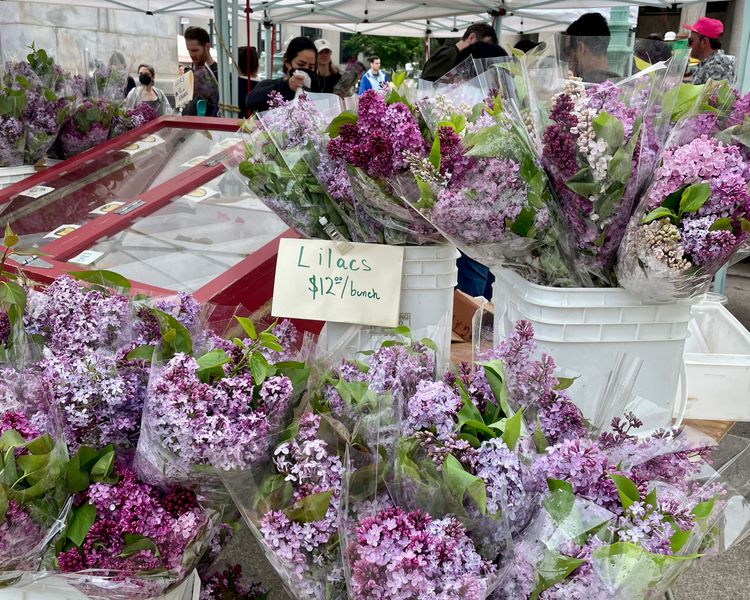Trees Green and Eyes Redden

At last, color returns to the city. New Yorkers’ dark, downy cocoons of winter are shed in lieu of too-soon shorts, revealing our goosebumped flesh. The petals of precocious trees that flower before they leaf are already beginning to drop, buffeting us with unexpectedly delightful eddies of pink confetti that are gone before you can pull out your phone. The overnight rains stoke unfurling foliage into an electric green and the city starts vibrating with a chromatic wash.
Sadly, your eyes, too, are saturated with a brilliant hue. Your inflamed lids are weeping and your nose is running, for pollen is stirring. Tree pollen first appears when we are still muffled in March, but usually peaks later in spring when the balmy breezes of May blow far and wide. Look up and see that the oaks are tasseled in catkins, the maples are spreading their stamens and stigmas beyond small petals, and ash trees have flowered in fluffy panicles—all steeped in fine, golden sneeze powder. One study found that two days after the city sees peaks of tree pollen, pharmacists’ registers resound with ringing sales of cetirizine, fexofenadine, levocetirizine, and other things advertised by happy people picnicking with golden retrievers under hot air balloons.
But stow a tissue travel pack in your bag and forge ahead, for street trees are our city’s lungs. Each year, a single large tree can remove the equivalent of 11,000 miles (or 410 trips up and down the length of Manhattan) of car emissions from our atmosphere. Its canopy and roots will capture stormwater runoff, holding back our toxic urban effluvia from rivers and bays. Its spreading branches will lower the temperature on our summer sidewalks.
You owe it one. Write it a thank you note, drawing your finger through the dusty yellow layer on the back window of a parked car. Just wash your hands before touching your face.

- Learn to see a tree’s beauty through the haze of pollen. Adopt a street tree on your block. Visit the New York City Street Tree Map to see what species are your neighbors. Pick one and begin to care for it. Clean out its bed. Water it on dry days. Whisper that you care.
- Note the NYC pollinators: butterflies, beetles, moths, bats, birds, and more are important travelers between flowers, supporting local biodiversity. Over 200 species of bees are known to live in the five boroughs. This month through August, you may even see one of the most glorious of these pollinators, the Pandorus Sphinx Moth, which at dawn and dusk is most active and is so large it is frequently mistaken for a small bird.
- Anemophilous is the melodious adjective to describe a wind-pollinated plant. Make a pilgrimage to the Sunset Park waterfront in Brooklyn to observe New York City’s first commercial-scale wind turbine at Sims Municipal Recycling and celebrate the natural power in the air.




